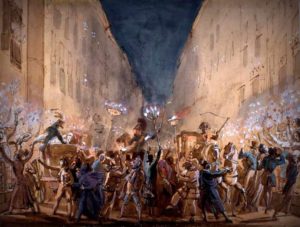On September 14, the Houston Symphony officially begins its 2019–20 Season with a spectacular Opening Night Concert of Russian classics, including Rachmaninoff’s Piano Concerto No. 3 with Yefim Bronfman. In this post, discover Tchaikovsky’s colorful Capriccio Italien, a perennial audience favorite. Visit houstonsymphony.org for tickets and more information.

Italy was one of Tchaikovsky’s favorite travel destinations—once he had begun to make a name for himself, he frequently escaped Moscow’s harsh winters for its sunnier climes. It was during his third visit to Rome during the winter of 1879–80 that he was inspired to compose his Capriccio Italien during “the height of carnival,” as he wrote to his friend and patron Nadezhda von Meck. “When you carefully look at the public raging on the [Via del] Corso, you are convinced that no matter how strangely the joy of the local crowd manifests itself, it is nevertheless sincere and unconstrained,” Tchaikovsky mused. “[It] is inhaled in the local air, warm, caressing. Such days are wonderful!”
The piece itself is appropriately a light, buoyant work characterized by brilliant orchestration and catchy, Italianate melodies. “It will be effective, thanks to its delightful tunes, some of which were chosen from collections, and some of which I heard myself on the streets,” Tchaikovsky noted. Indeed, its premiere in Moscow the following winter was so well received that the piece was performed again the same month “by popular demand.”
The piece begins with a reveille-like trumpet fanfare:
Tchaikovsky’s brother, Modest, informs us that Tchaikovsky’s hotel in Rome was next to a cavalry barracks that sounded this very bugle call each day. The strings then introduce a slow, languorous melody that alternates with the fanfare in varying orchestral guises, until the oboes introduce one of Tchaikovsky’s catchiest earworms, a lilting, waltz-like tune. The theme grows more brilliant as more instruments join in, leading to a rushing new theme in the violins and flutes over a pulsing accompaniment. After a dancing tune featuring the tambourine, the music dies away and the languorous opening theme returns. The tempo picks up as woodwinds introduce a fast, minor-key tarantella. Though Tchaikovsky claimed that the tunes of Capriccio Italien were found in “collections” or “on the streets,” this is the only one that has been sourced to a known Italian folk tune of the time called “Ciccuzza.” The waltz melody then makes a grand return, leading to a thrilling Tchaikovskian finale. —Calvin Dotsey
Don’t miss Tchaikovsky’s Capriccio Italien on September 14! Visit houstonsymphony.org for tickets and more information.




Need to further dissect the tunes in the piece. One sounds like “The Naughty Lady of Shady Lane” pop tune by the Ames Brothers in the 50s.